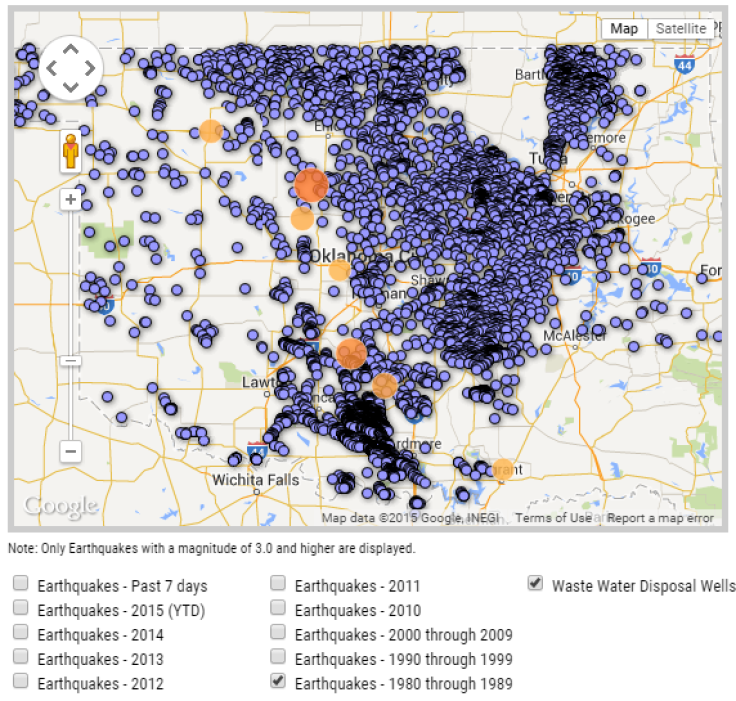Oklahoma Earthquake Swarm 2015: In Sharp Turnaround, Oklahoma Officials Confirm The Link Between Fracking Wastewater And Earthquakes

Oklahoma’s government confirmed this week that hundreds of earthquakes rocking the state are largely caused by oil and gas operations. The position marks a sharp turnaround for state officials, who for years expressed skepticism that Oklahoma’s earthquake swarm could be linked to the rampant underground disposal of wastewater from oil and gas wells.
The state’s energy and environment office on Tuesday launched a website, called Earthquakes in Oklahoma, which embraces the scientific consensus that injecting billions of gallons of wastewater near fault zones is triggering temblors in areas with little history of seismic activity. Until this week, officials had maintained that the spike in earthquakes was probably a natural phenomenon.
Oklahoma experienced 585 earthquakes of magnitude 3.0 or greater last year -- up from just 103 temblors of that size in 2013, according to the Oklahoma Geological Survey. Before 2008, when oil and gas drilling accelerated in Oklahoma, the state experienced only about two magnitude 3.0 earthquakes each year.
“While we understand that Oklahoma has historically experienced some level of seismicity, we know that the recent rise in earthquakes cannot be entirely attributed to natural causes,” the new state website says. “The Oklahoma Geological Survey has determined that the majority of recent earthquakes in central and north-central Oklahoma are very likely triggered by the injection of produced water [i.e., wastewater] in disposal wells.”


Oil producers are churning up copious amounts of wastewater as they drill down into older wells. With newer wells, oil is more readily accessible. But eventually, after the easy-to-reach oil is pumped out of the ground, drillers must pull up brackish wastewater to tap the remaining oil reserves. In the mid-1990s, many of Oklahoma's older wells were abandoned because the wastewater was too much of a hassle.
Over the past decade, however, new "dewatering" technologies and the rising price of oil reignited interest in Oklahoma's aging wells. Unconventional drilling techniques such as hydraulic fracturing, or fracking -- another wastewater-intensive process -- made it easier to exploit more of Oklahoma's fossil fuel resources. As a result, energy companies are injecting liquid into deep underground wells at an unprecedented scale, which is stimulating the state's fault lines.
Oil and gas industry groups this week continued to cast doubt on the cause of Oklahoma’s earthquake outbreak. “There may be a link between earthquakes and disposal wells, but we -- industry, regulators, researchers, lawmakers or state residents -- still don’t know enough about how wastewater injection impacts Oklahoma’s underground faults,” Chad Warmington, president of the Oklahoma Oil and Gas Association, said in a statement Tuesday, The Oklahoman newspaper reported.
A similar debate is playing out in other oil- and gas-rich states rattled by earthquakes, including Arkansas, Colorado and Ohio. In Texas, a study released Tuesday linked a swarm of small earthquakes to natural gas wells and wastewater injection sites near Fort Worth. Scientists at Southern Methodist University in Dallas and the USGS studied an 84-day period from November 2013 to January 2014, which saw 27 earthquakes of magnitude 2.0 or greater in an area that had no recorded quakes in the last 150 years.
"There appears to be little doubt about the conclusion that the earthquakes were in fact induced," USGS seismologist Susan Hough, who wasn't part of the study team, told the Associated Press. "There's almost an abundance of smoking guns in this case."
© Copyright IBTimes 2024. All rights reserved.











